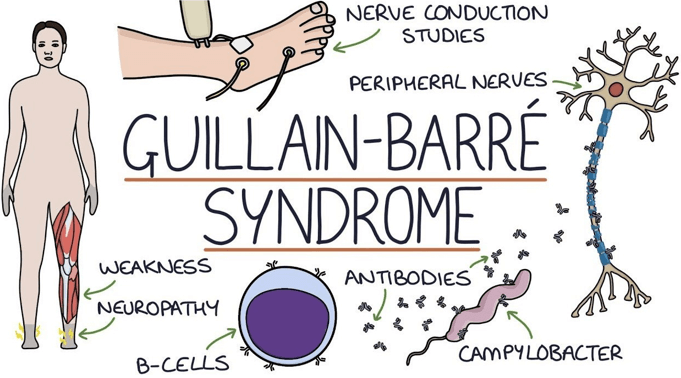While caring for a client with Guillain-Barre syndrome, which finding should the practical nurse (PN) report to the charge nurse?
Irregular heart rate.
Profuse diaphoresis.
Lower leg weakness.
Full facial flushing.
The Correct Answer is A
This is the finding that the PN should report to the charge nurse because it indicates a possible complication of Guillain-Barre syndrome, which is autonomic dysfunction. This can affect the cardiac, respiratory, and gastrointestinal systems and cause life-threatening problems such as arrhythmias, hypotension, or respiratory failure. The PN should monitor the client's vital signs closely and report any abnormal changes.

Nursing Test Bank
Naxlex Comprehensive Predictor Exams
Related Questions
Correct Answer is ["B","D","E"]
Explanation
A) Incorrect - Hyperglycemia typically does not lead to weight loss. In fact, it can result in weight gain due to the body's inability to properly use glucose for energy.
B) Correct - Hyperglycemia can lead to an increased sensation of hunger as the body's cells are not effectively receiving the glucose they need for energy, causing the person to feel hungry.
C) Incorrect - Cool and clammy skin are not typical symptoms of hyperglycemia. Hyperglycemia can lead to dry skin, but it does not cause cool and clammy skin.
D) Correct - Hyperglycemia often leads to increased thirst and urination. Excess glucose in the blood can cause the kidneys to work harder to filter and eliminate the glucose, leading to increased fluid intake and subsequently increased urination.
E) Hyperglycemia can cause dehydration, leading to dry, flushed skin and sometimes headaches due to electrolyte imbalances and reduced blood flow to the brain.
Correct Answer is D
Explanation
A) Incorrect- This response might address the client's concern but doesn't directly address her dichotomous thinking or provide immediate therapeutic communication.
B) Incorrect- While showing happiness for the client's improvement is positive, this response does not address the client's behavior or engage with her dichotomous tendency.
C) Incorrect- This response acknowledges the client's liking but doesn't address the dichotomous thinking pattern or provide an effective therapeutic response.
D) Correct- answering this question encourages the client to express her concerns and perceptions, fostering communication. This approach acknowledges the client's feelings and provides an opportunity for her to discuss the issue, potentially leading to a productive conversation.
Whether you are a student looking to ace your exams or a practicing nurse seeking to enhance your expertise , our nursing education contents will empower you with the confidence and competence to make a difference in the lives of patients and become a respected leader in the healthcare field.
Visit Naxlex, invest in your future and unlock endless possibilities with our unparalleled nursing education contents today
Report Wrong Answer on the Current Question
Do you disagree with the answer? If yes, what is your expected answer? Explain.
Kindly be descriptive with the issue you are facing.
